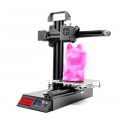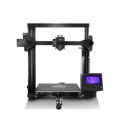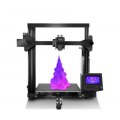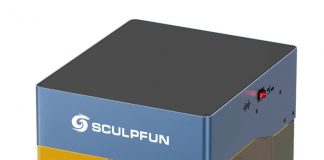ZONESTAR Z9M3
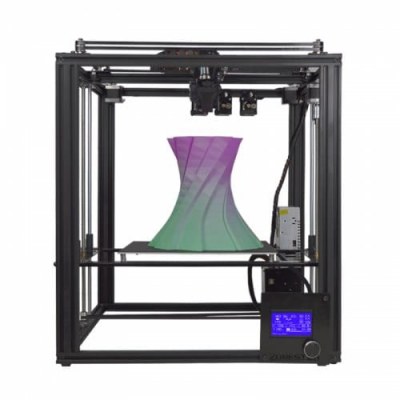
-
1: 3-IN-1-OUT Automatic mixing-color printer
-
2: Open source Firmware
-
3: 24-language menu
-
4: Classic print size: 300 x 300 x 400 mm
-
5: Full metal parts
ZONESTAR Z9M3 Three Mixed Color Fast Assemble 3D Printer
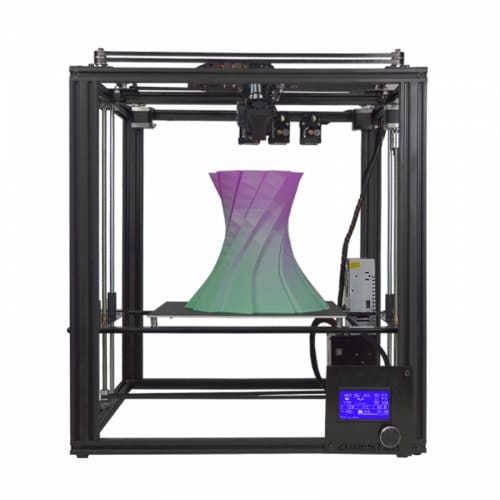
Until a few years ago, 3D printers were one of those objects of desire that few people could afford. What began as a development product for professionals and creatives, would later arrive at homes with much more affordable prices. ZONESTAR Z9M3 is one of those cheap 3D printers that adapt to any type of user, easy to assemble and able to make prints from a microSD card.
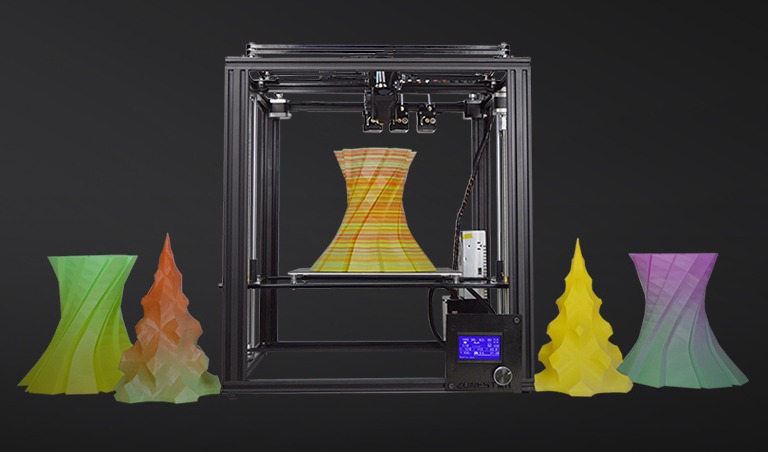
Once mounted the printer, we see that it looks like the popular Anet E10, in terms of structure. The axes are determined by the V-shaped aluminum profiles for the movement of the rollers. After assembly, the printer transmits the feeling of solidity with some additional adjustment on our part. The entire weight of the printer rests on large legs. Despite these good feelings, there are some aspects that can be improved on this 3D printer.
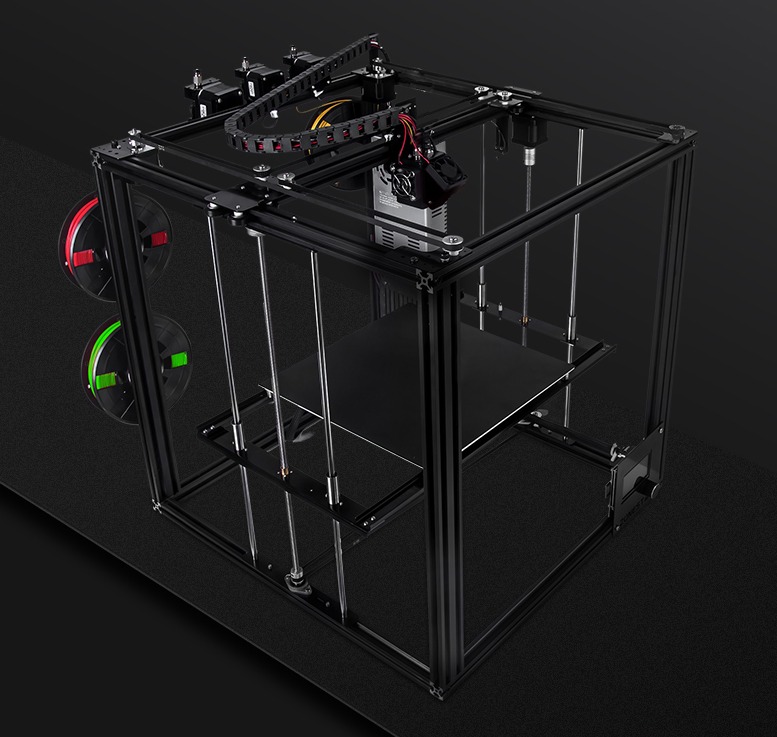
The first of these lies in the flat cable that is connected to the LCD screen. The screen can be placed both on the left and on the right, something that lefties will appreciate and that implies that the cable is very long. I believe that another solution should have been sought and not end up hanging. We have fixed it with a bit of zeal to the bar. We also did not like hard plastic hoses for wiring, like those used in homes. During the printing, with the movement you can hear some crunches of plastic that can be annoying.
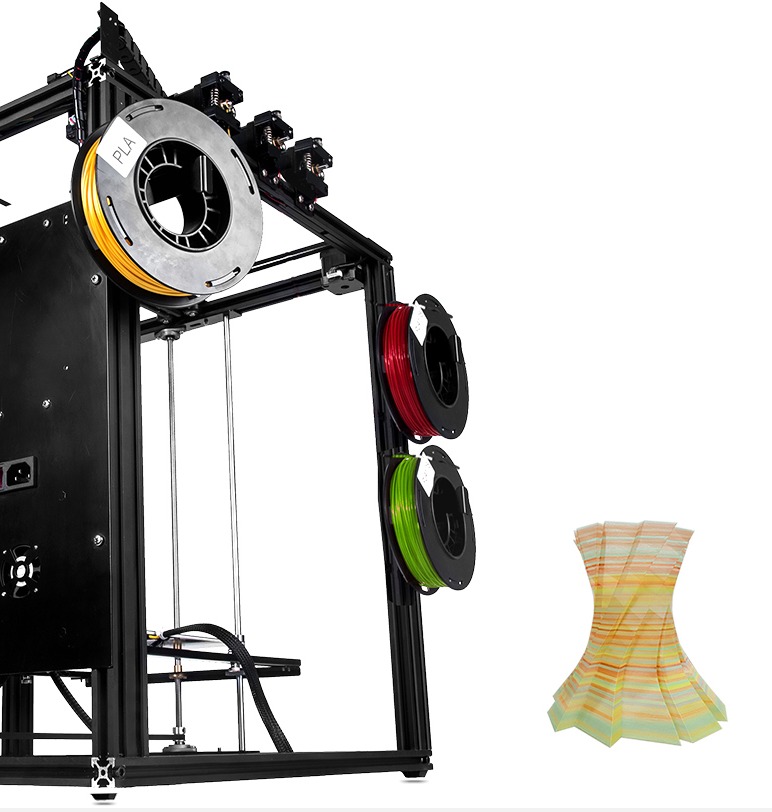
ZONESTAR Z9M3 is not suitable for small desks. It has measures of 56.00 x 56.00 x 60.00 cm and a total weight of 12 kg. Its large size allows you to have a work space of 300 x 300 x 400 mm. Even so, this printer was thinking to print small or medium sized projects with good precision. A much more advanced device than the Alfawise U30 that we reviewed on the web.
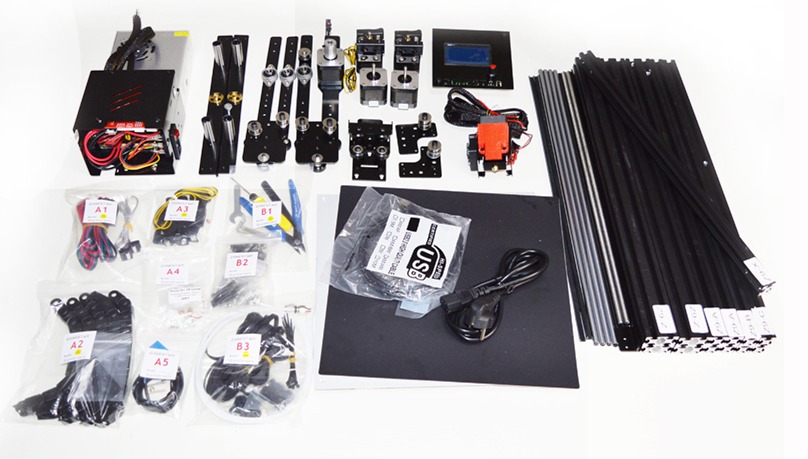
The LCD touch screen has a size of 2.8 inches and color panel. Add greater ease of use without having to resort to a computer. What’s more, through the rear slot for microSD cards, designs can be added for direct printing. The screen shows a multitude of informative parameters such as the temperature of the extruder and the bed, fan speed, remaining time of printing, among others. There are many adjustments that can be made from the screen, such as the calibration of the bed, maintenance of the extruder, project viewer, etc.
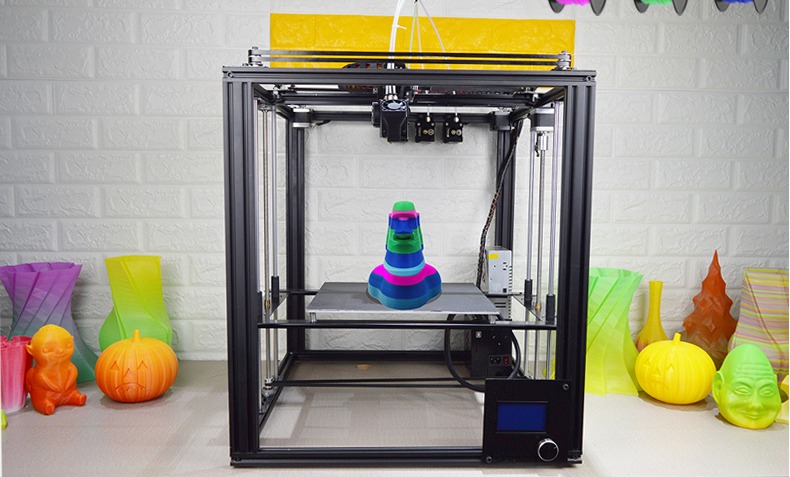
Despite this figure, it is not one of the fastest printers when it comes to heating the extruder and bed nozzle. Regarding the speed of printing, the ZONESTAR promises to reach 150 mm/s at maximum speed and 20 mm/s at least. The diameter of the filament used is 1.75 mm, so we will not have any problem finding it. Although it allows us to make impressions from the microSD, we can also send projects with Cura or Simplify. It is compatible with Windows, Mac and Linux operating systems.
SPECS
Product Details
| Features |
New upgrade three extruder 3-IN-1-OUT Automatic mixing-color printer Open source Firmware 24-language menu,large size LCD screen Classic print size: 300 x 300 x 400 mm Full metal parts, V-slot profiles with high-precision wheels, frame more stable, movement more smooth, printing more accuracy.Use stand- alone power adapter, closed print-head design, make use safer. Detailed tutorials make installation and use easier, all difficult accessories are pre-installed Z9M3 series products has a rich interface. Not only you can upgrade |
| Specification |
Brand Name: ZONESTAR Brand: ZONESTAR Model: Z9M3 Frame material: Aluminium Extrusion Platform board: Aluminum Base Nozzle quantity: Single Nozzle diameter: 0.4mm Nozzle temperature: 190 -220 Degree Celsius Product forming size: 300 x 300 x 400 mm Memory card offline print: TF card Print speed: 150mm/s Platform temperature: Room temperature to 110 degree Supporting material: ABS,PETG,PLA,Nylon PVA,Flexible PLA File format: STL,G-code,OBJ,3DS Model supporting function: Yes XY-axis positioning accuracy: 0.012mm,0.0125mm Voltage: 24V Host computer software: Repetier-Host,Cura,Simplify3D,Slic3r Packing Type: unassembled packing Certificate: CE,RoHs,FCC Size: Large Connector Type: USB,TF card |
REVIEWS
-

Before buying, I want to watch a video where the zero-free printer is being assembled.
Disclaimer Note
Ratings are based on objective reviews from our users.



